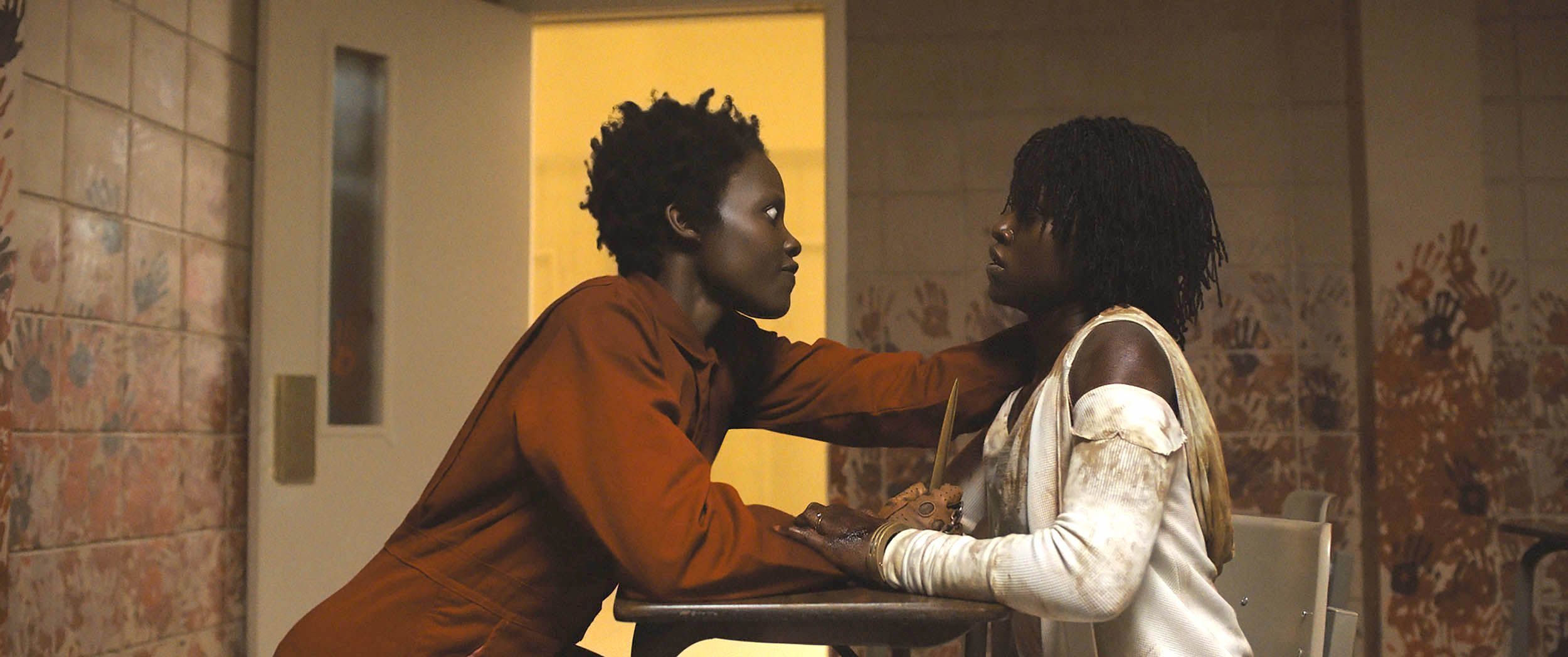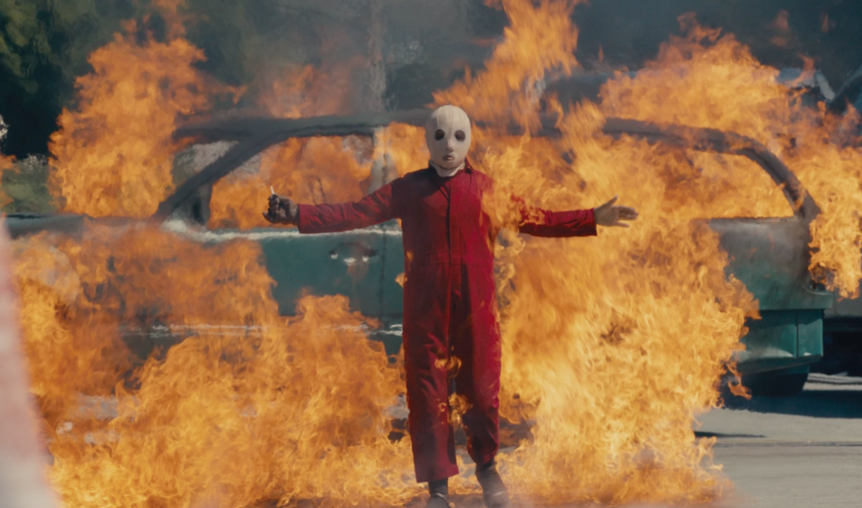Create a free profile to get unlimited access to exclusive videos, sweepstakes, and more!
Awards Contender: Us brought unusual instruments together to terrify you with music

Welcome to Awards Contenders. This month, SYFY WIRE is talking to the actors, directors, designers, and craftspeople whose work was featured in the best movies and TV offerings of 2019, and who are now the leading awards nominees. Today, we're speaking with NAACP Image Awards-nominated composer Michael Abels of Us.
When Jordan Peele was in pre-production on Us, he turned once again to his Get Out composer Michael Abels for musical assistance in making his new film more terrifying. The story is about duality, Peele said, so why not experiment with unconventional sounds and instruments that don't normally go together?
Abels took that note and ran with it, realizing that when our ears don't recognize an unusual instrument, that touch of the unknown can add to the fear factor. He also played with silence as an instrument of its own. The result is an impressionistically creepy score, filled with chanting, sighing, and weird, growling vocalizations.
What was it like to have free reign on this?
Jordan likes to surprise audiences, or as I sometimes say, he likes to ruin things for people. He likes to take things that you don't think of as scary, and put them in a context that makes them very scary. Just like he wanted to ruin rabbits for people, and show them how scary rabbits are.
So with the musical ideas, at the beginning of the opening title, for "Anthem," he said, "How about we use children's voices? That will be really freaky!" That's not something people would think of as freaky, but in Jordan's world, that's a freaky opportunity.
It also ties back to the children's chorus in the music for The Lost Boys, which fits because of the Santa Cruz boardwalk theme. Although at least there, we could tell what they were singing. These are short staccato bits that sound like nonsense words…
Right! We deliberately wanted the words to not be in any particular language because it needed to feel like it was not of any particular culture. The way the syllables sound, it sounds like it could be Latin, but it's accompanied by a really funky beat that would never be found in any kind of marching music, so it's meant to be a kind of multicultural march that comes from the underworld. It's scary and multicultural, in the way that America is scary and multicultural sometimes.
And it's scary because it feels like they're going into battle. What about some of the other vocalizations? Sighing, growling?
Yes, yes. Heavily. I was writing nonsense syllables, and then I realized, there's no such thing as nonsense. Every human utterance… We are trained from the moment a baby cries to try to read what's going on. And you don't need words for choirs and vocals to be extremely emotional.
Sometimes leaving out the words actually brings out more of the raw emotion. So there are places in the score, especially near the end, where the choir is just sighing. I actually gave them the instruction to sound exhausted. They needed to sound broken down by life — not cries, but sighs of despair.
The growls, that's when they're singing a trilled "R." I took French in high school, and the teacher used to make us practice that rolled "R." Because you can sustain that, you can make a pitch out it. At the end of the tracks "News Report" and "Performance Art," you can hear the basses and the baritones going "rrrrrr."
What are some of the instrument choices between surprising pairs, to express duality?
I would say the solo violin and an Eastern European instrument called a cimbalom, which is kind of a cross between a piano and a dulcimer, played with little mallets. And there's a strange drum that sounds like an oil can, the Propanium drum. It's kind of a virtual instrument, so it exists in a world between real and non-real, without sounding fake or electronic. In the "Beach Walk" piece, there's a kalimba and a berimbau, which is a South American instrument, which makes this really cool percussive sound.
There's a lot of didgeridoo in the background, just sustaining notes, because it creates this otherworldly ambiance. The ambient textures help create disturbing sonic environments. Originally I thought it would just be for the Underpass, but it's also in the above-ground world as well.
The final battle/dance scene, the "Pas De Deux" between the two Adelaides, was originally going to be underscored by Tchaikovsky's The Nutcracker. This changed more than any other scene in the film. It's interesting because your resulting cue interpolates "I Got 5 On It," which itself is an interpolation of "Why You Treat Me So Bad."
It was in the script, as part of the exposition to help us get to know the four characters as a family earlier in the film. You see each character interact with the song. Adelaide teaches Jason to snap his fingers to the beat. The teenage daughter thinks it's about drugs. The dad says, "It's not about drugs!" but that's probably because he's a dad. He's trying to be a good dad.
But Jordan likes to ruin things for people. So at the end, at the dance scene between Adelaide and Red, it was going to be Nutcracker, because there are quick scenes of them dancing to The Nutcracker when they were younger. I was going to do a horror Nutcracker, with distortion, for this moment, but then Jordan said, "It would be cool if we did 'I Got 5 On It' here."
It's really about the call-and-response, the back-and-forth between two melodies. I added more space or silence between the baseline and the melody, so the answer, or response, doesn't come when you think it's going to, when they're stalking each other and facing off. Playing with the silence adds more tension.
What's the moment of which you're most proud?
"Femme Fatale," when Elisabeth Moss is putting on lipstick in the mirror, which is meant to evoke old Hollywood in the 1950s, 1960s. Audrey Hepburn, right? It's very graceful and ravishing with the violins, but also very violent when the music deteriorates. It was a chance to pretend that it was 40 or 50 years ago, and then bring in the dissonance to make your skin crawl.



























